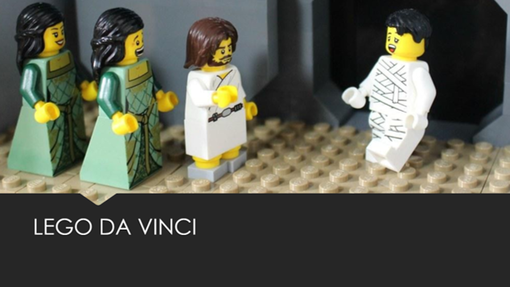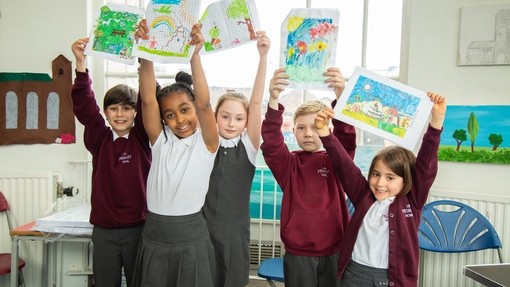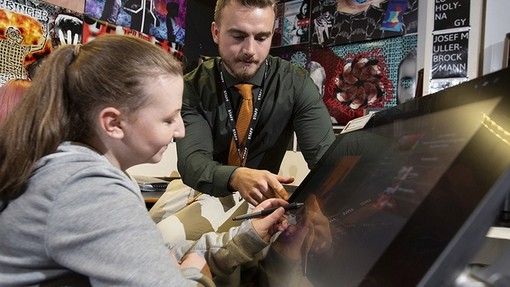Content
St Paul’s Juniors is an independent, academically selective boys’ school for ages 7-13. We are culturally diverse and our music, art and drama departments enjoy a high profile both in and outside of the classroom.
Head of Drama, Jonathan Boustead explains how their Artsmark journey began as a means of getting accreditation for their arts provision. However, they soon began to see opportunities to improve, specifically pursuing more meaningful collaborations across departments.
How Artsmark has worked for us
The quality principles and Artsmark framework gave us a good baseline on which to build our plans. We began by auditing departments: identifying successes, gaps and training needs, but not long after this we went into lockdown. All departments then began to utilise digital resources; Art, Drama, Houses, Sport, Music and Theology and Philosophy found new ways of delivering creative projects, which the boys could tackle at home. In drama, we devised schemes of work that required learners to watch and respond with recordings: creating characters and stories (following a sequential structure), which culminated in a mini movie.
When the Covid pandemic hit, it was crucial that we didn’t shelve Artsmark. We formed a steering group to discuss projects and kept sharing resources with staff. A New Direction, our bridge organisation, were immensely helpful in providing tools, tips and resources, which translated into online learning. Theatres and galleries began producing recorded or streamed content, which we could signpost and then share their impact on Google Classroom. This helped to keep our sense of community intact.
Impact
The impact has been tangible: greater engagement, widened understanding and there have also been notable benefits on well-being:
“X has thoroughly enjoyed Drama with you and having to film himself doing various monologues has started quite a passion for iMovie! Having a bit more time to devote to being creative has been a real silver lining for him this term…”
Digital literacy and e-safety vigilance also increased. Boys had to get creative in use of apps like Imovie, animatics, stop motion and green screen – many of which had been previously unfamiliar to them. Theology and Philosophy saw greater engagement with Biblical parables as boys rewrote them into narrated stop motion scenes. Independence and resourcefulness increased as we had to teach boys to make use of the things that were readily available to them. Sport devised virtual fixtures and Art also delivered Masterpiece Re-enactment projects, in which boys chose a classic painting and recreated it with themselves as the subject. We also continued our extra-curricular provision, offering free St Paul’s Youth Theatre lessons, and a virtual theatre week. Here, guest tutors provided workshops in playwriting, set design and improvisational comedy. Despite lockdown, our talent show went ahead as an Instagram mini-series and virtual concerts took place. When school’s reopened, we then had covid guidance to apply to our Artsmark vision, which impacted our extra-curricular clubs. We were restricted in terms of bubbled year groups and capped participation, nevertheless, we explored use of film and joined Shakespeare School’s Festival for Year 6 Youth Theatre boys, and a Cautionary Tales film for Year 7 & 8 boys.
“Despite the extraordinary circumstances, you did a brilliant job of keeping the boys engaged and challenged during online learning and beyond”
Our collaborations have been strengthened through Artsmark. Theology and Philosophy made use of iPads in retelling The Raising of Lazarus as stop-frame animations, with Lego and other toys as props and characters. This led to a greater understanding of the stories, which improved their exam answers. The English department undertook training with Royal Shakespeare Company in teaching Shakespeare. They employed techniques from the rehearsal room approach which heightened the boys’ understanding of character, plot and themes. Their attainment in their subsequent writing was notably higher than it had been before. It was also noted that there was less disparity amongst boys in attainment. Most recently, Art and Maths have been working together exploring bearings: plotting routes on a tube map, which fed into constructions (Euclid’s Elements) –producing visualisations of their logical thinking. The impact is a widened use of Mathematics, not just the study of numbers but of shapes, space and the world around us. It has encouraged them to think more deeply about the ways in which maths can be applied outside of the context of a lesson. Art is then embellishing the project, the results for which will be produced later in the year.

The above is by no means an exhaustive account. It is merely a snapshot of what was achieved during school closures. The ability to continue developing creativity and maintain top quality outcomes was a real achievement for us. It was hard fought for and the odds seems against us, but this ultimately resulted in a greater display of resilience, collaboration and creativity from the entire school community. I am delighted too, to see the sense of appreciation and thirst for live performance opportunities, rather than dwindle, has greatly increased. We are currently working on Bugsy Malone with a cast of 85, a technical crew of 10 and an orchestra pit of 10.
Follow St Paul’s Juniors on Instagram to see lots of children’s work and creative school activities.
Download St Paul’s lesson plan for delivering a Stop Motion project.


